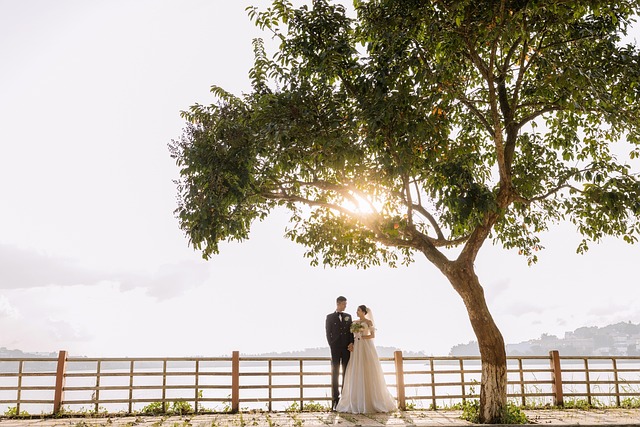Large properties present unique fencing challenges, demanding durable, cost-effective solutions that span vast areas. Understanding these specific needs is key to selecting the right materials and installation methods. This article explores various facets of fencing large spaces, from budget-friendly options like wood and vinyl to creative design possibilities. It delves into longevity, DIY vs. professional installation, and essential maintenance tips to ensure long-lasting, visually appealing, and economical fence solutions.
- Understanding Fencing Needs for Large Properties
- Budget-Friendly Materials: Wood and Vinyl
- Longevity: Choosing Durable Fences
- DIY vs. Professional Installation
- Creative Design Options for Large Spaces
- Maintenance Tips for Cost-Effective Fences
Understanding Fencing Needs for Large Properties
Large properties present unique fencing challenges compared to smaller plots. The vastness requires fences that can cover extensive lengths, often with a need for both aesthetic appeal and robust durability. Security is another crucial aspect; owners may require high-security fencing to protect valuable assets and ensure privacy. Additionally, the terrain’s natural features, such as hills or bodies of water, add complexity, demanding versatile fencing solutions that adapt to uneven ground.
Understanding these diverse needs is vital for selecting suitable fencing materials and styles. Wooden fences, for instance, offer a traditional appeal but necessitate regular maintenance. Metal fencing, while durable, might be costlier. Vinyl options are low-maintenance and budget-friendly, suitable for straight runs along flat terrain. Each material has its advantages, catering to specific requirements, ensuring both the property’s security and visual harmony.
Budget-Friendly Materials: Wood and Vinyl
When it comes to fencing large properties on a budget, wood and vinyl are two materials that offer both affordability and versatility. Wooden fences have long been a popular choice for their natural aesthetics and ability to provide privacy and security. Treated wooden posts and rails can withstand the elements, making them durable and cost-effective in the long run. This classic option allows for creativity in design, from simple post-and-rail setups to more intricate styles, catering to various property preferences.
Vinyl fencing is another budget-friendly alternative that has gained popularity. It offers a range of visual appeal, with various colors and styles available to match any aesthetic. Vinyl’s low maintenance characteristics make it an attractive option; it never needs painting or staining, ensuring a long-lasting finish. Moreover, its flexibility allows for easy installation, even in tricky terrain, making it suitable for large properties.
Longevity: Choosing Durable Fences
When considering fencing solutions for large properties, longevity should be at the forefront of your decision-making process. Opting for durable fences ensures a sound investment that can withstand the test of time and harsh weather conditions. Materials such as steel, aluminum, and high-density polyvinyl chloride (HDPVC) offer exceptional resistance to rot, rust, and decay, making them ideal choices for extensive outdoor spaces.
Durable fencing materials not only require less maintenance but also significantly reduce replacement costs over the years. By choosing long-lasting options, you can enjoy a consistent aesthetic appeal and security without frequent upgrades or repairs, ensuring your large property remains well-protected and aesthetically pleasing for many years to come.
DIY vs. Professional Installation
DIY fencing installation can be an appealing option for those looking to save costs, especially on larger properties where materials and labour expenses can quickly mount up. Many homeowners opt to take on this project themselves, leveraging online tutorials and resources to guide their efforts. While this approach offers significant financial benefits, it’s not without challenges. DIY methods may require a substantial upfront investment in tools and materials, and the learning curve for proper installation techniques can be steep, leading to potential structural issues over time.
Conversely, professional installers bring expertise and experience to the table, ensuring fences are installed correctly from the outset. Though this route comes at a higher price point, it eliminates the risks associated with DIY installations. Professionals can navigate complex landscapes, handle heavy materials safely, and ensure compliance with local building codes – all while providing peace of mind and long-term durability for your property’s new fence.
Creative Design Options for Large Spaces
When it comes to designing fences for large properties, creativity is key to making a statement while staying within budget. One popular trend is incorporating natural elements into the design, such as using live fences or hedges to create a living border. This not only adds texture and visual appeal but also provides privacy and security in an eco-friendly manner. For instance, mixing different plant species can create a dynamic and unique fence that requires minimal maintenance.
Another innovative approach is integrating art into the fencing structure. Custom metal sculptures or painted designs on wooden panels can transform a mundane barrier into a stunning piece of outdoor art. These creative options allow homeowners to personalize their spaces while still enjoying cost-effective solutions for large properties, ensuring both beauty and functionality.
Maintenance Tips for Cost-Effective Fences
Maintaining your cost-effective fence is essential to ensure its longevity and aesthetic appeal. Regular cleaning is a simple yet effective step; brushing away dirt and debris with a soft-bristled brush or hose down the fence periodically will prevent buildup. Check for any loose or damaged panels, posts, or rails at least once a month and replace as needed.
Painting or treating the fence annually can protect it from the elements and prolong its life, especially if you’ve opted for a basic, cost-saving material. Inspect for rust on metal fences and consider repainting or using protective coatings to prevent further deterioration. For wooden fences, apply a fresh coat of sealant each year to shield against water damage and insect infestations.
